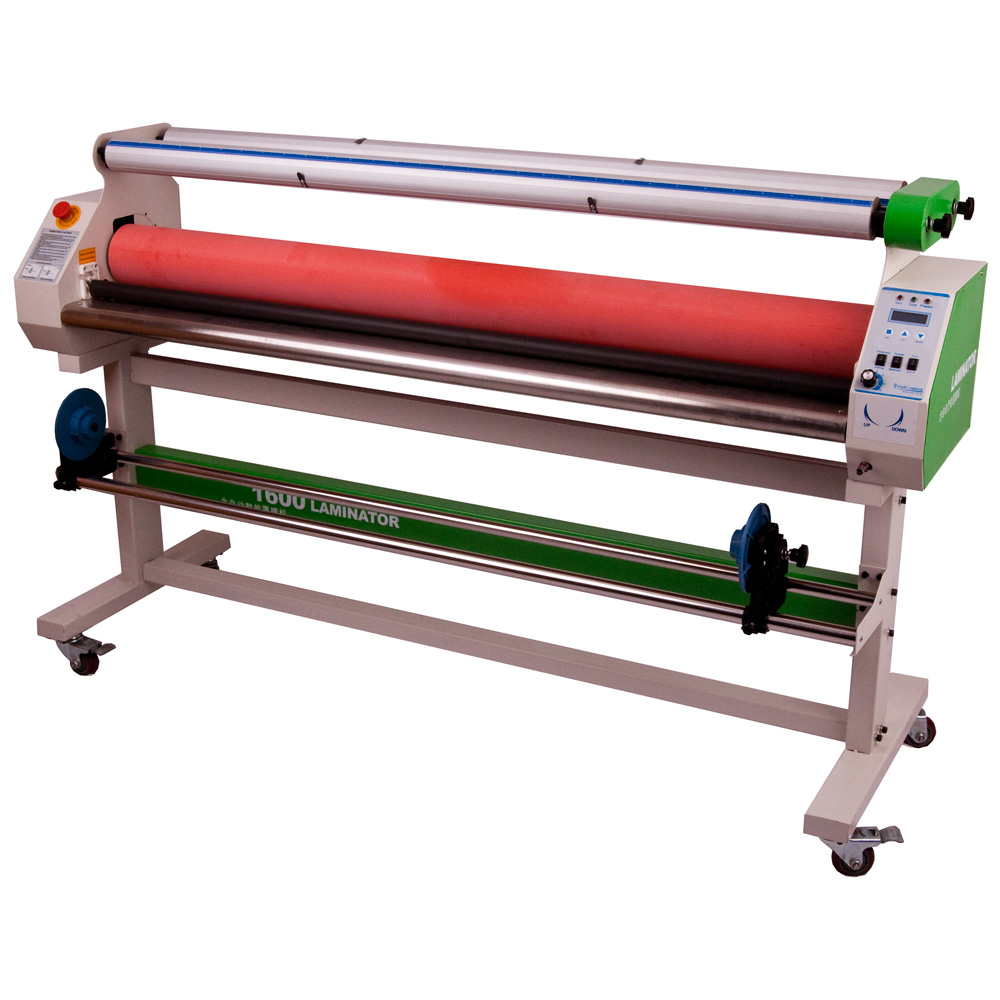Why Would I Buy a Laminator – 101?
To Preserve & Protect Your Valuable Digitally Printed Products.
Lamination provides long-term protection without the need for climate control or other special protective measures.
-
Lamination protects from the wear and tear that occurs during handling and shipping, protecting from abrasion (Car Washes), dirt, pollutants, chemicals, and nearly all solvents.
-
UV inhibitors in laminates help to preserve colors and increase longevity of the inks. As a rule, UV laminates add 1/2 of the life expectancy of your ink to the overall life of the print i.e. when using 3 year inks, lamination can add up to 1 1/2 years to the print life.
-
Laminated items are temporarily or permanently waterproof, depending on the type of film used.
Why Laminate?
To Improve Appearance: there are several ways lamination improves the appearance of prints
-
Laminate deepens and brightens colors.
-
Laminate enhances contrast
-
Dirt, grease and smudges and finger prints can be cleaned off a laminated surface.
-
Enhance or change the finish of a print by applying a Gloss, Matte, Satin or Luster laminate.
-
Lamination gives materials a finished, professional look of quality. Laminated prints simply look better!
-
Gloss laminate gives prints an attractive “wet look”.
Why Laminate?
To Improve Sales & Save Money: by giving your materials a higher quality, professional look, lamination improves your business image and helps bring in more sales leads. Lamination can save both you and your customer money in a variety of ways.
- Laminated prints can be reused.
- Valuable graphics are protected.
- Lamination stiffens prints making the use of application tape unnecessary.
- Laminated prints resist the effects of weather and/or other environmental conditions.
- Lamination makes it easier and faster to install graphics.
What Laminate should you use?
The main things to consider here are, the kind of vinyl are you laminating, the application of the print (this will determine whether to use cast or calendared) and the desired look of the final product.
Covering Cast Vinyl (AKA high performance vinyl, HPV)= use Cast Laminate
Covering Calendared Vinyl (AKA intermediate performance vinyl, IPV) = use Calendared Laminate
First we need to understand the difference between cast and calendared films. Think Jell-O and Pizza Dough. Like calendared vinyl, pizza dough starts out as a solid and is stretched to its desired shape. It retains memory of its original form and tends to want to return to it – it shrinks. Like cast vinyl, Jell-O is poured into a mold as a liquid and then becomes the only solid form it has ever known. Thus it has no memory of a prior form and will not shrink.
With this in mind, you can see why you can laminate calendared vinyl with cast laminate (most don’t do to costs), but you can’t laminate cast vinyl with calendared laminate. If the top layer shrinks, it will pull the bottom layer up at the edges causing the graphic to fail. Therefore it is very important to consider what kind of film you are applying the laminate over. If you are laminating vehicle graphics you should always use a cast film for both your print and laminate. Because calendared vinyl’s tend to shrink a little, they will fail when applied to complex curves. The extra cost of cast films (about $0.95 per sq/ft for both the film and the laminate material combined), is nothing when compared with the cost of removing failed graphics and doing them again with the right materials.
Always use Cast films on vehicles!!
When laminating perforated window film, it is necessary to use optically clear laminate as regular laminates will not provide adequate visibility as the holes will fill with both dirt and water..
Laminating window film will stop water and dirt from collecting in the holes preserving visibility.
The finish of the laminate will determine the final look of the image. This is mostly a case of achieving a desired look, but considering the application of the print can sometimes be helpful. For instance, a gloss laminate will match the finish of a vehicles paint job when doing a partial wrap, whereas in brightly lit areas gloss laminate may produce too much glare for the print to be visible. Some folks like the Dead Matte Finish look, especially on Rat Rods.
Other Things to Consider in Lamination…
When using pressure sensitive laminating films, it is recommended that you set your roller temperature to between 80 and 100 degrees Fahrenheit if you have a Heat Assisted Laminator. This allows the adhesive to activate more easily with less silvering to the finish. If you are experiencing silvering after lamination, heating the print with a heat gun or leaving the print overnight will generally fix the problem.
Keep this in mind when doing vehicles if you are buying a laminator,since you can buy them without a heat assist feature, but this will mean that you’ll need to let your prints out-gas for at least 24 hours, with proper print profile setting, you can laminate in an hour with a heat assist.
Curling of a laminated print occurs when there is a tension imbalance between the print layer and the laminate layer. An upward curl, implies too much tension on your laminate, while a downward curl, implies too much tension on the print. Reduce the amount of tension on the proper layer of material to eliminate this problem.

